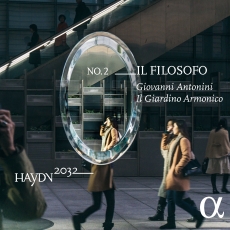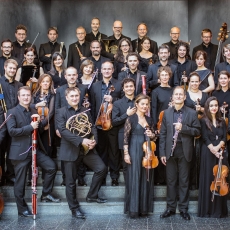Giovanni Antonini & Il Giardino Armonico - Haydn 2032, Vol. 2: Il filosofo - BBC Music Magazine
Performance 4*
Recording 5*
No one could accuse Giovanni Antonini and his ensemble Il Giardino Armonico of not planning ahead: these CDs mark the start of a Haydn symphonies project whose completion is timed to coincide with the composer’s tercentenary in 2032. The first two instalments include some of the dramatic works from Haydn’s so-called Sturm und Drang, or ‘Storm and Stress’, period of the late 1760s and early 1770s. No. 49, aptly nicknamed La Passione, begins with a sombre Adagio, and features two exceptionally turbulent quick movements; while No. 46, in the unusual key of B major, has a fragment of its minuet returning during the course of the finale, thereby anticipating Beethoven’s Fifth Symphony by several decades. The Philosopher No. 22 uses a pair of cors anglais instead of oboes, producing a strikingly original sonority. Less even in inspiration is the G minor No. 39, with a bland and retrogressive slow movement sandwiched between violently agitated outer movements.
An enterprising feature of these recordings is their inclusion of a piece by one of Haydn’s contemporaries, as a form of reference point. WF Bach’s F major symphony for strings has its moments of quirky originality, but more substantial is Gluck’s complete Don Juan ballet featured on the first disc. Mozart must have known this piece, and its concluding scene with the Don tormented by the Furies in hell (Gluck later borrowed from it in the Paris version of his Orfeo) is tremendously effective. The earlier numbers, including a captivating serenade for oboe and pizzicato strings, and a Spanish dance resonating to the sound of castanets, are generally more graceful.
Antonini’s spiky performance style, with period instruments playing at modern pitch, is sometimes a touch overheated, but there’s no denying its effectiveness. His choice of repeats is generally well judged (though it’s a mistake to include the second-half repeat in the finale of No. 46, making the surprise of the minuet’s return occur twice), and it’s good to have these still underperformed pieces so vividly played and well recorded.


